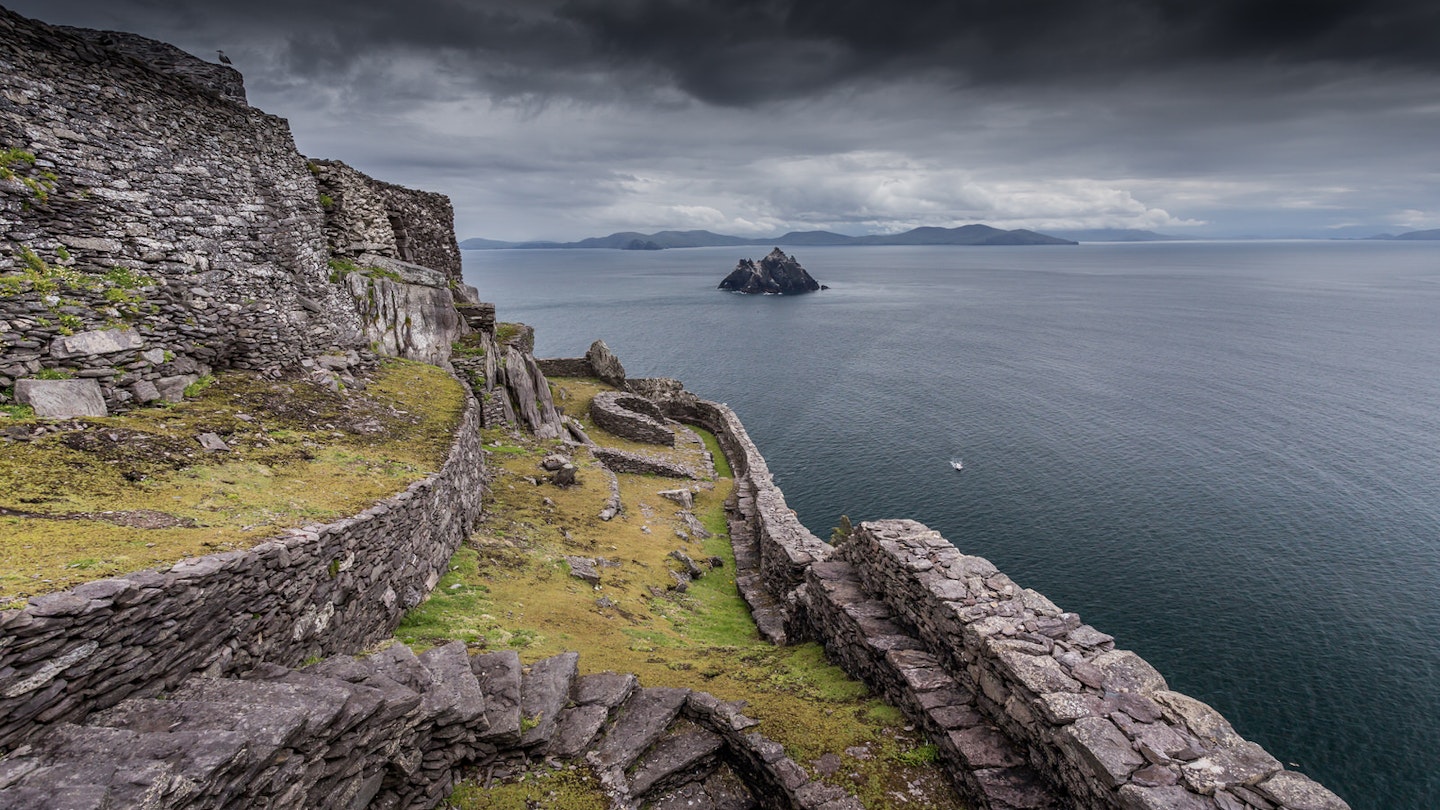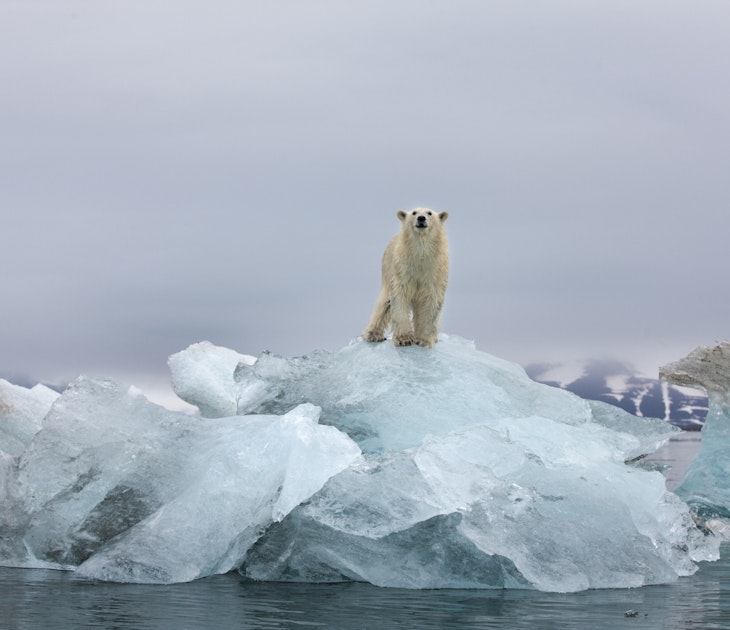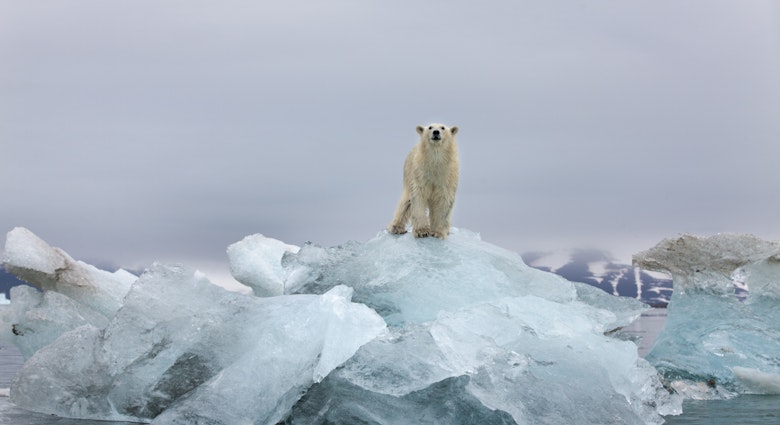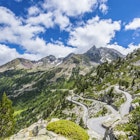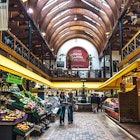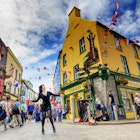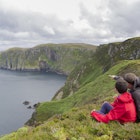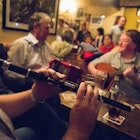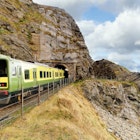Ireland’s beautiful, untamed Atlantic coast has attracted numerous visitors, including the makers of the latest Star Wars films. A visit to some of the dramatic filming locations for The Force Awakens and its sequel offers the chance to explore deep chasms and remote islands, and follow poets, dolphins and monks on Europe’s western frontier.

Stand on Ireland’s tip in County Donegal
Donegal’s Inishowen Peninsula, home to the most northerly point on the Irish mainland, was thrown into a frenzy when scenes featuring Luke Skywalker, Rey and the Millennium Falcon were shot here in early 2016. Filming centred around a deep chasm known as Hell’s Hole, which has been carved into the rock over millions of years by the fierce Atlantic, which roars below.

Hell’s Hole can be reached along a well-marked path that skirts the headland from Banba’s Crown, at the the tip of Malin Head. It was from Banba’s Crown (named after a mythical Irish queen) in a British Admiralty tower built during the Napoleonic Wars that the Marconi Company sent the first commercial message by wireless. From this windy perch you can look out towards Inishtrahull Island and, on a good day, Scotland.
Afterwards, warm yourself in the confines of Farren’s Bar, Ireland’s most northerly pub, just 2km from Banba’s Crown in Slievebawn. It’s hard to miss — there’s not much else around here, plus it has a giant mural of Yoda painted outside. Inside, you’ll receive a warm welcome and no shortage of anecdotes about the time Mark Hamill came in.
Ireland’s penchant for storytelling can be experienced at Malin Well, a natural spring said to cure many diseases, a short walk from Farren’s. The nearby Wee House of Malin is a little cave, supposedly once inhabited by a hermit, where legend states that no matter how many people enter there is always room for one more.
A 15-minute drive from Malin Well will bring you to Five Fingers Strand, one of Donegal’s world-class sandy beaches, which is seldom (if ever) busy and a popular stop-off point for visitors on their way to and from the top of Malin Head.
Need to know
The nearest airports are Derry and Donegal. Hiring a car is the best way to explore the peninsula, although Foyle Coaches (foylecoaches.com) has a couple of routes that pass through Malin. For a cosy night’s stay, try Whitestrand B&B.
County Clare’s dazzling charm
It was surely the cliffs, so precipitous you feel the land could fall into the sea at any given moment, that brought Lucasfilm to Loop Head, a headland north of the River Shannon in County Clare. Filming for Episode VIII led to the closure of the elegant Victorian lighthouse here for several days. Up to five people can stay in the Lightkeeper’s Cottage (irishlandmark.com) – it’s a great place to spot swooping puffins or dolphins bobbing in the waters below.
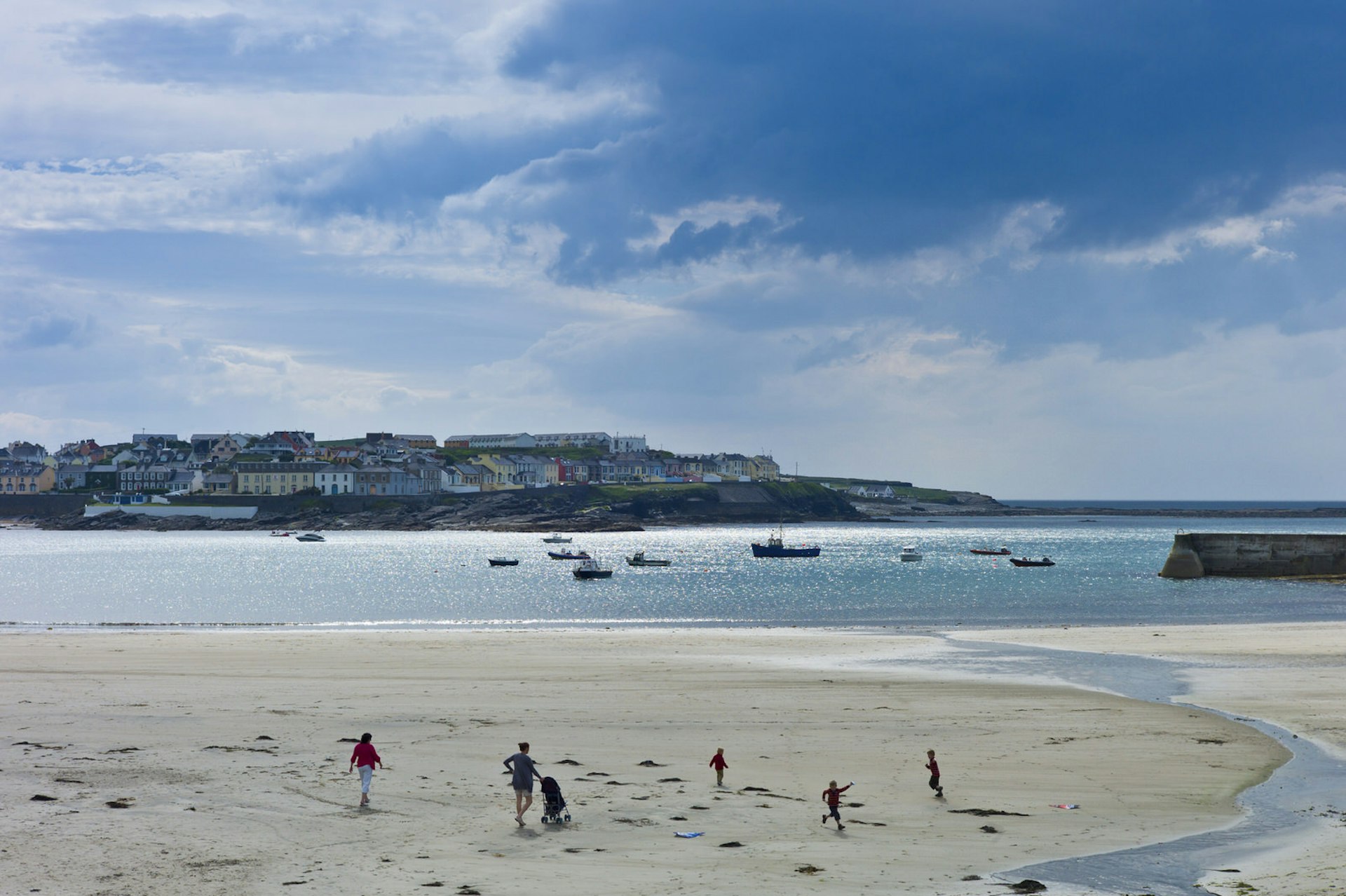
Loop Head’s main town, Kilkee, is a seaside resort that attracted the likes of Charlotte Brontë, Alfred Tennyson and William Makepeace Thackeray in its 1890s heyday. Also worth a visit is the traditional hamlet of Moyasta, which is renowned for its oysters and annual Crotty Galvin Traditional Music Festival (ireland.com), a raucous, ceilidh-filled weekend.
Need to know
From Shannon Airport you can get a bus to Ennis, which connects to both Moyasta and Kilkee. From Kilkee a local taxi will take you out to the lighthouse.
Hilltop B&B has far-reaching views but our favourite touch is the offer of musical instruments for guests.
Traditional music in Dingle
Star Wars’ 2016 filming on the Dingle Peninsula took place on the sublime headland of Ceann Sibeal (Sybil Head). It featured an apparent replica of the 6th-century monastery on Skellig Michael, which doubled as a Jedi temple in The Force Awakens.

On this stretch of coastline, foreboding rock faces give way to hidden coves and beaches and the sense of isolation is exhilarating.
If you’d rather something a little livelier, head to Dingle Town, which is something of a Mecca for travelling musicians – you can hear traditional music sessions every day of the week.
Dick Mack’s is the most famous of the town’s pubs and has its own Hollywood-style stars on the pavement celebrating past guests. O’Sullivan’s is another pub offering authentic traditional music – Daisy Ridley (who plays Rey) was spotted here doing shots in between filming.
Keep your eyes peeled for the town’s resident dolphin, Fungie, who has been delighting visitors for over 30 years.
Need to know
The nearest airport is in Kerry but if you’re travelling here by public transport you’ll need to come via Tralee.
The luxurious Castlewood Guest House (castlewoodguesthouse.com) on Dingle Bay is consistently rated highly. Idás, in Dingle Town, offers modern Irish and French-inspired dishes using local ingredients.
The deep south in County Cork

As well as filming at its most northern point, Star Wars location scouts chose the most southern point on the Irish mainland, in County Cork. Filming for The Force Awakens’ sequel took place on a private spot at Brow Head, just south of Crookhaven Village, around 4km east of Mizen Head, where the cast and crew made use of abandoned mines and derelict buildings.
The offshore Fastnet Lighthouse is an iconic landmark that is remembered as the last land view for many 19th-century emigrants as they headed for a new life in America. For a sobering reminder of the impact of famine in these parts, head to the Skibbereen Heritage Centre, which houses a permanent exhibition on the Great Famine.
Need to know
The nearest airport is in Cork. You need a car to do justice to this region, as many of the most interesting villages are tricky to access by public transport.
The Barleycove Beach Hotel (barleycovebeachhotel.com) is ideally located for the lovely Barley Cove beach and is just 4km from the cliffs of Mizen Head. The Crookhaven Inn has a simple menu of mainly seafood dishes, from chowder to open crab sandwiches.
Visiting ancient Skellig Michael

The nature reserve of Skellig Michael, a monolith off the coast of Kerry that seems to shoot out of the sea, is home to thousands of nesting seabirds, including puffins, kittiwakes and Manx shearwaters.
At the moment visitor numbers are limited to 180 per day and boats are only allowed to dock between May and October, although following an influx of interest thanks to its appearance at the end of Episode VII there have been calls to extend the season.
If you do manage to find space on a boat, pack your walking boots as the only way to reach the ruins of the medieval monastery is to climb the 600 steps carved from granite. It’s worth it — the stone beehive buildings are magical. Little wonder UNESCO classed Skellig Michael a World Heritage Site in 1996.
Need to know
There are two types of boat tours to the Skelligs – a landing tour and an eco-tour, which goes around Skellig Michael and the smaller Little Skellig. Both depart from Portmagee marina on the Ring of Kerry.
